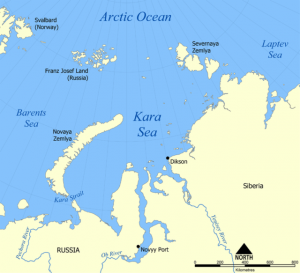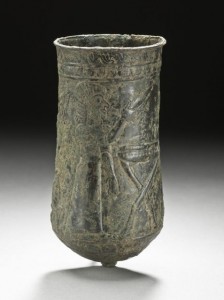Scientists recently made a startling discovery whilst on an expedition to monitor permafrost on the Gydan Peninsula; a 1,000-year-old bronze cup from ancient Persia (modern day Iran). The discovery was made close to the Kara Sea, the furthest north such an artifact has been found.
The cup was likely brought to the region by ancient traders seeking walrus tusks, birds, and fur.
(Kara Sea map)
A senior researcher from the Center for Arctic Studies, Andrei Gusev, said: “Archaeological studies of the area around Lake Parisento and the Yuribei River, located beyond the Arctic Circle, have resulted in surprise finds such as a bronze Iranian cup dated to the Middle Ages.”
“Artifacts from this era have been found in West Siberia before, but never so far in the northeast, let alone in the Arctic. The exact age of the cup will be determined after further studies.”
The cup was revealed due to wind erosion in an area where permafrost is melting. The area seems to have been the site of an ancient camp where the traders stopped and rested on their journey, before setting off again
“The cultural layer was eroded by the wind and we found the fragment of the cup with a ceramic vessel and a bronze knife handle.”
(Luristan bronze)
The cup was turquoise-colored and probably brought to northern Siberia some 200 years after it was made, which is estimated to be in the 10th or 11th centuries AD.
From Institute of Archaeology and Ethnography, Novosibirsk, Scientist Dr. Arkady Baulo, said: “From the 6th and 7th centuries AD Central.
Asian merchants began to appear in the Upper Kama region. They exported walrus tusks, hunting birds, and fur from the north. Through the Kama region, they had penetrated to the Ob region in 7th and 8th centuries.”
Traders brought the Persian items that took on ritual meanings for the native Khanty and Mansy peoples. They were kept in holy places and were seen as gifts to gods and spirits.
Ceremonial food for the gods was served on dishes during the festivals. Other Persian artifacts have also been found in Russia, the Siberian Times reported.
A 30km area near Lake Parisento was the area the expedition set out to study. A monitoring system was installed by scientists to measure the ice.
Ask me anything
Explore related questions







